
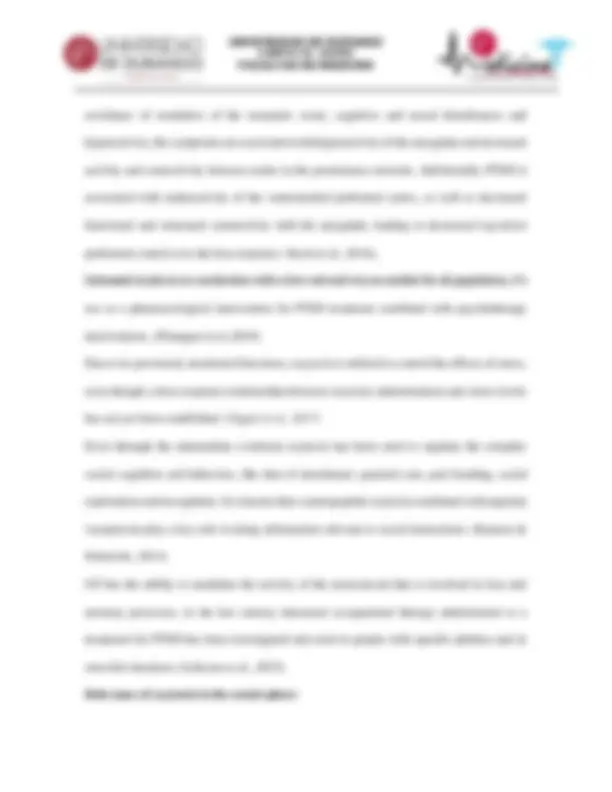

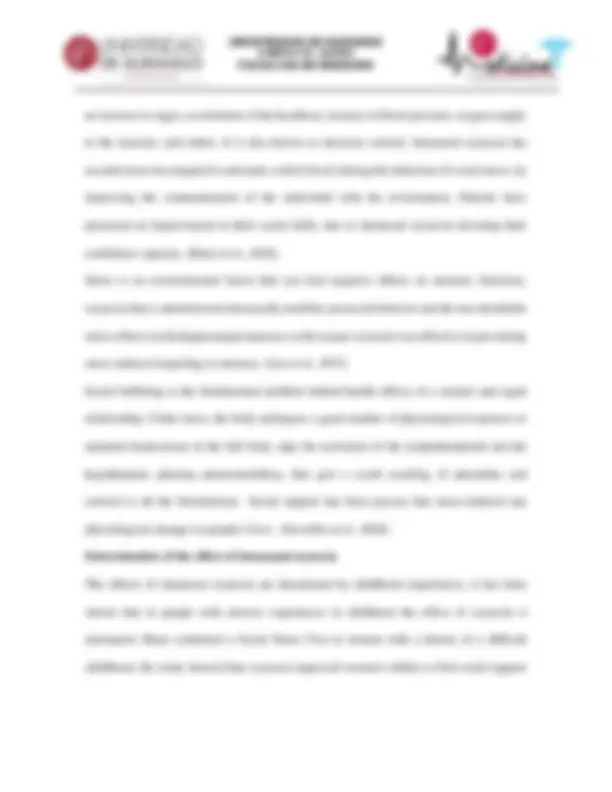
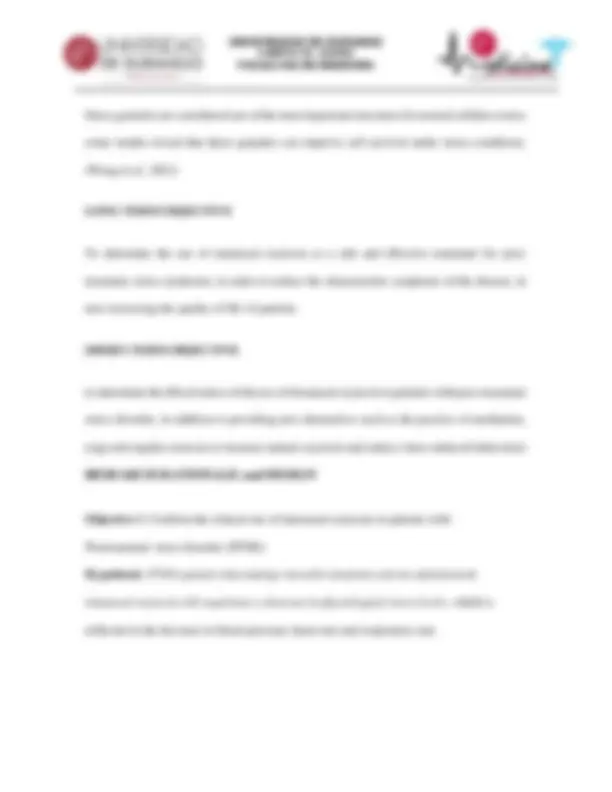
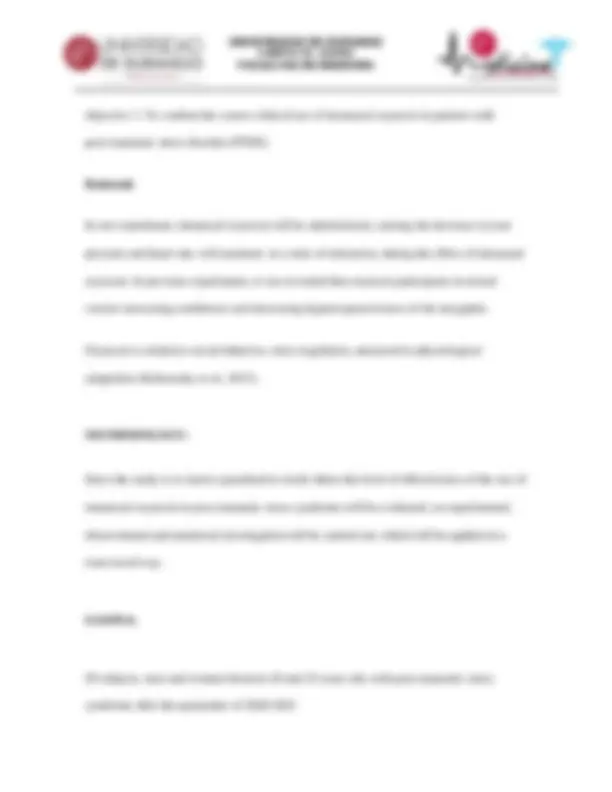
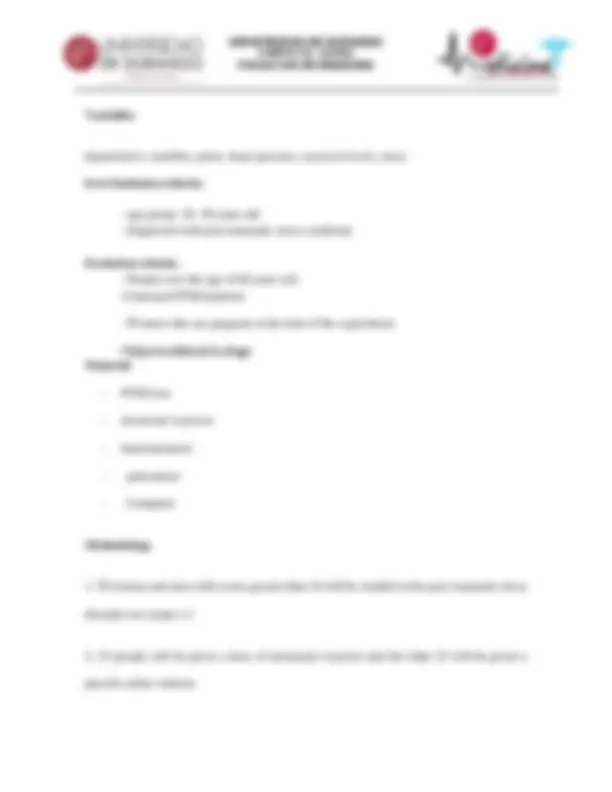
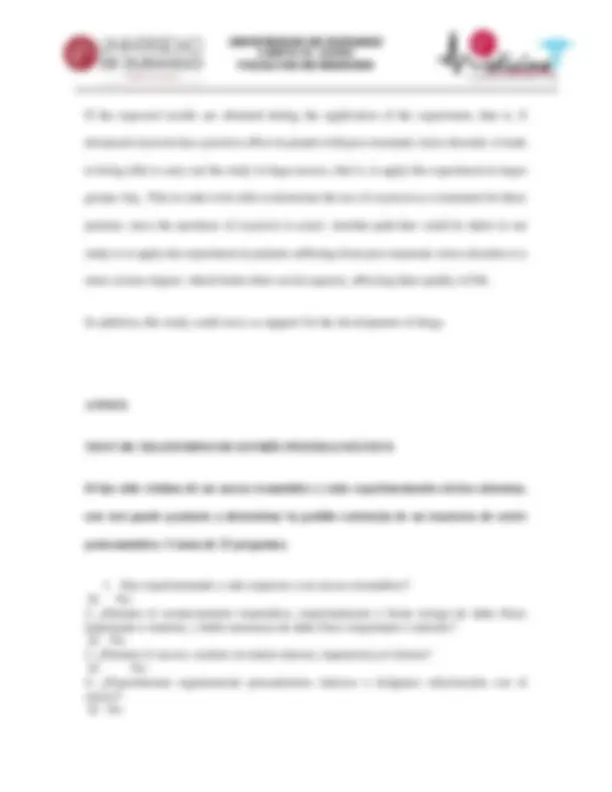
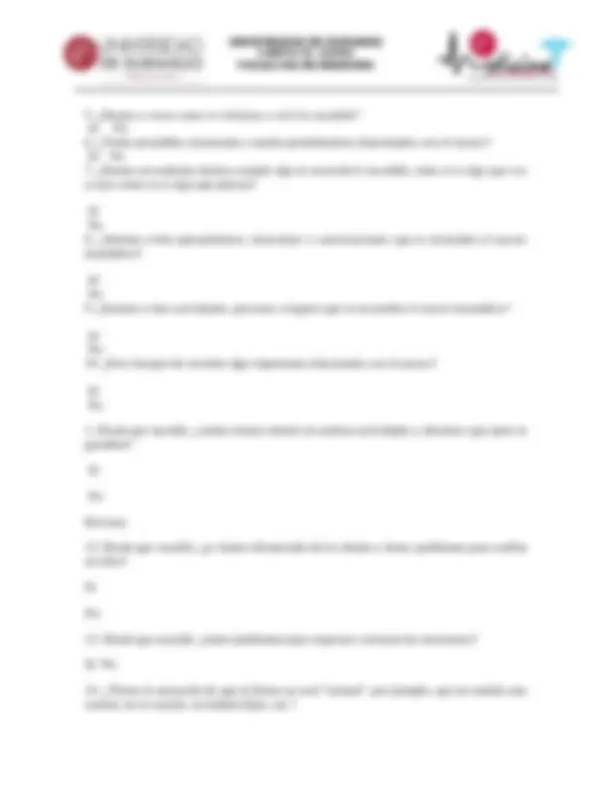
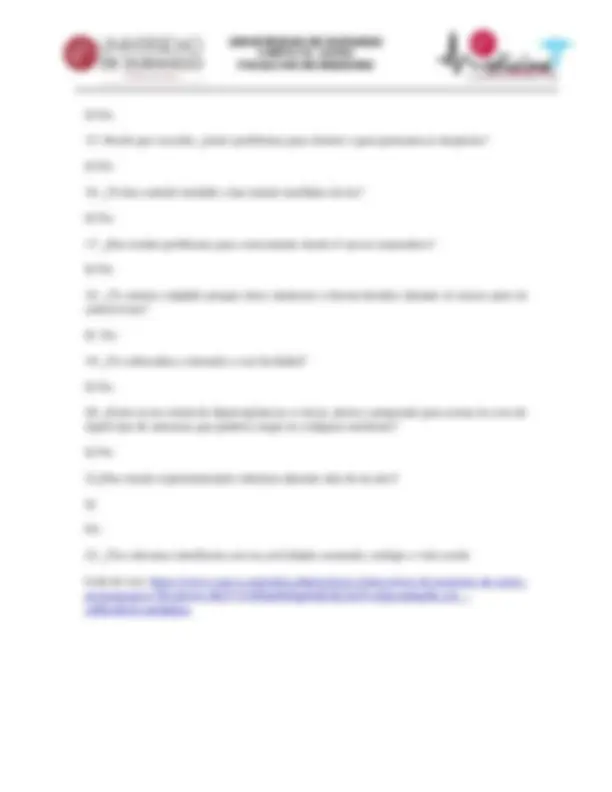
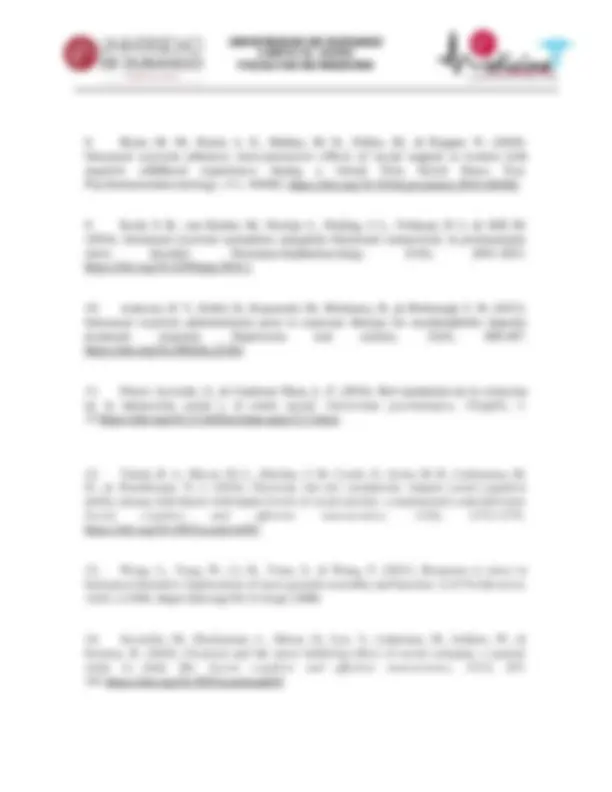
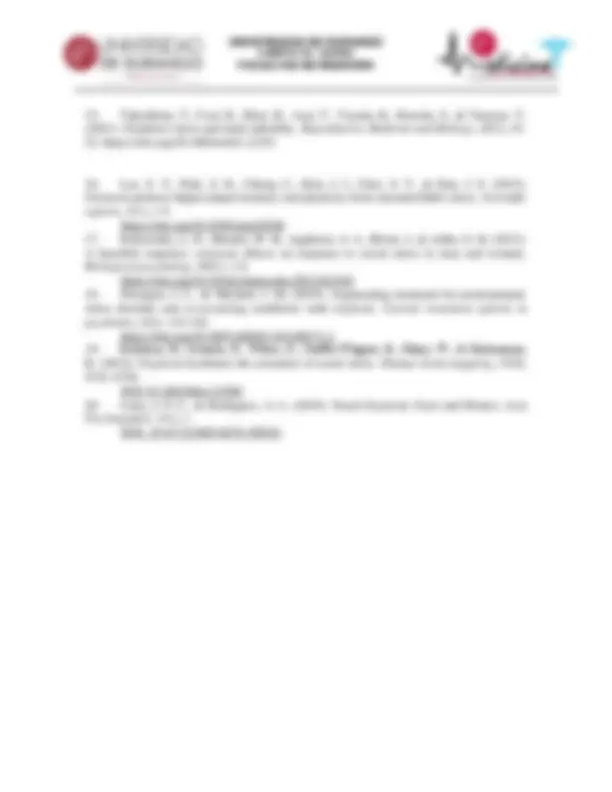


Prepara tus exámenes y mejora tus resultados gracias a la gran cantidad de recursos disponibles en Docsity

Gana puntos ayudando a otros estudiantes o consíguelos activando un Plan Premium


Prepara tus exámenes
Prepara tus exámenes y mejora tus resultados gracias a la gran cantidad de recursos disponibles en Docsity
Prepara tus exámenes con los documentos que comparten otros estudiantes como tú en Docsity
Los mejores documentos en venta realizados por estudiantes que han terminado sus estudios
Estudia con lecciones y exámenes resueltos basados en los programas académicos de las mejores universidades
Responde a preguntas de exámenes reales y pon a prueba tu preparación

Consigue puntos base para descargar
Gana puntos ayudando a otros estudiantes o consíguelos activando un Plan Premium
Comunidad
Pide ayuda a la comunidad y resuelve tus dudas de estudio
Descubre las mejores universidades de tu país según los usuarios de Docsity
Ebooks gratuitos
Descarga nuestras guías gratuitas sobre técnicas de estudio, métodos para controlar la ansiedad y consejos para la tesis preparadas por los tutores de Docsity
Una investigación experimental sobre el uso de oxytocina intranasal en el tratamiento de la síndrome de estrés postraumático (PTSD). Se discute la motivación detrás de su uso, el fondo científico, el proceso de producción de oxytocina en el sistema nervioso central y su papel en la modulación de la actividad del sistema nervioso simpático y hipotálamo-hipófisis-adrenal. Se presentan los objetivos, la metodología y las expectativas de resultados de la investigación.
Tipo: Resúmenes
1 / 19

Esta página no es visible en la vista previa
¡No te pierdas las partes importantes!












CAMPUS CD. JUAREZ FACULTAD DE MEDICINA L
TOPIC: clinical use of intranasal oxytocin in patients diagnosed with post-traumatic stress syndrome MOTIVATION Oxytocin is known as the love hormone, this hormone intervenes in certain physiological processes that activate behaviours and influences them at a mechanical level in specific organs like the uterus and breast. This is due to oxytocin acting as a neurotransmitter in the sympathetic nervous system (SNS) and a decrease of its activity in the hypothalamic- pituitary-adrenal axis. This activity in the SNS causes an increase in endogenous levels of opiates and induces anti-stress effects, such as low blood pressure, heart rate and stress hormones (Cardoso et al., 2013). In addition to being a hormone involved in lactation and childbirth, intranasal oxytocin reduces the activation of areas involved in fear processing, as well as reduces symptoms in response to stress, it is important to consider the use of intranasal oxytocin in illnesses such as generalized anxiety disorder and post-traumatic stress syndrome. BACKGROUND: Oxytocin (OT) is a nonapeptide hormone formed by nine amino acids, the synthesis of OT in the central nervous system (CNS) is produced by the predominant expression of the OT gene in neurons located in the paraventricular (NPV) and supraoptic (NSO) nuclei of the
CAMPUS CD. JUAREZ FACULTAD DE MEDICINA L hypothalamus. The release of OT is carried out by the NSO through magnocellular neurons that project to the neurohypophysis; While axonal projections of small NPV parvocellular neurons innervate the amygdala, hippocampus, nucleus accumbens, and lateral septum. Similar to classical neurotransmitters such as dopamine, serotonin, GABA or acetylcholine, OT is conserved in vesicles that can be released by electrical stimulation to the synaptic cleft; but unlike classical neurotransmitters, OT can diffuse through the extracellular space (Florez & Cardenas, 2016) Oxytocin is primarily produced by the paraventricular and supraoptic nuclei of the hypothalamus, where it is released into the bloodstream from the posterior pituitary, and travels through the bloodstream to meet its specific receptor (Cardoso et al., 2013). Function of oxytocin. Studies in non-human and human animals have shown that OT has a modulating role in a wide variety of social interactions that have been relevant in the evolution of mammals such as social recognition, sexual behavior, mating, parental behavior (Florez & Cardenas, 2016). It is also considered a great mediator and controller of emotions in social behaviors such as love, memory, anger, aggression and the establishment of correlations between past and present experiences. It promotes an increase in pain threshold and a decrease in anxiety levels, reduces fear and increases confidence and empathy (Steinman et al., 2016). Oxytocin as a treatment Oxytocin is involved in many of the medications related to stress, among them it is mainly related to patients with post-traumatic stress disorder (PTSD). 10% of people exposed to trauma develop post-traumatic stress disorder (PTSD), its symptoms include intrusions,
CAMPUS CD. JUAREZ FACULTAD DE MEDICINA L Neuropeptide oxytocin (OT) potential influence on social cognitive ability in individuals with social anxiety raises the question of whether arginine vasopressin (AVP), which is structurally similar to OT, may also impact social cognition in individuals with social anxiety, or whether such an effect may be specific to OT. Like OT, AVP also regulates a broad range of social processes including social cognition (Tabak et al., 2016). A social study indicates that oxytocin is related with social behavior, stress regulation and positive physiological adaptation, in this study social stress was induced in men and women the results were cardiovascular changes, men were less affected while women had more anger issues but better performance to social stress. (Kubzansky et al., 2012). Homeostasis is a form of equilibrium of the body, by interrupting this the psychological stress implied the normal well-being of the body, triggering a potential risk like a coronary heart disease, cancer or major physiological depressions. (Eckstein et al,. 2014) To better understand how the male reproductive system responds to environmental influences and the role of SGs in male germ cells, we review advanced discoveries in this field and provide some perspectives on future research. (Wang et al., 2021) Many studies on the effect of seminal oxidative stress (OS) on male fertile capacity have been reported since Aitken et al first reported reactive oxygen species (ROS) results from a disturbance of homeostatic balance between ROS production and antioxidant capacity in seminal plasma (Takeshima et al., 2016). Stress Stress is a normal response of the human body to an alert situation. During stress, the levels of cortisol and adrenaline hormones increase, which then act in different organs, and produce
CAMPUS CD. JUAREZ FACULTAD DE MEDICINA L an increase in sugar, acceleration of the heartbeat, increase in blood pressure, oxygen supply to the muscles, and others. It is also known to decrease cortisol. Intranasal oxytocin has recently been investigated to attenuate cortisol levels during the induction of social stress, by improving the communication of the individual with his environment. Patients have presented an improvement in their social skills, due to intranasal oxytocin elevating their confidence capacity. (Riem et al., 2020). Stress is an environmental factor that can lead negative effects on memory functions, oxytocin that is administered intranasally modifies prosocial behavior and the uncontrollable stress effects on the hippocampal memory so this means oxytocin was effective in preventing stress-induced imparting in memory. (Lee et al., 2015) Social buffering is the fundamental problem behind health effects of a normal and equal relationship. Under stress, the body undergoes a great number of physiological responses to maintain homeostasis in the full body, algo the activation of the sympathoadrenal and the hypothalamic pituitary-adrenomedullary, that give a result resulting of adrenaline and cortisol to all the bloodstream. Social support has been proven that stress-induced any physiological changes in people's lives. (Sicorello et al., 2020). Determination of the effect of intranasal oxytocin The effects of intranasal oxytocin are determined by childhood experiences, it has been shown that in people with adverse experiences in childhood the effect of oxytocin is attenuated. Riem conducted a Social Stress Test in women with a history of a difficult childhood, the study showed that oxytocin improved women's ability to find social support
CAMPUS CD. JUAREZ FACULTAD DE MEDICINA L There are some anatomical structures that can't permit the free entrance of oxytocin in the central nervous system; these structures are three barriers that keep the brain protected.
CAMPUS CD. JUAREZ FACULTAD DE MEDICINA L Stress granules are considered one of the most important structures for normal cellular events; some studies reveal that these granules can improve cell survival under stress conditions. (Wang et al,. 2021) LONG TERM OBJECTIVE To determine the use of intranasal oxytocin as a safe and effective treatment for post- traumatic stress syndrome, in order to reduce the characteristic symptoms of the disease, in turn increasing the quality of life of patients. SHORT-TERM OBJECTIVE to determine the effectiveness of the use of intranasal oxytocin in patients with post-traumatic stress disorder, in addition to providing new alternatives such as the practice of meditation, yoga and regular exercise to increase natural oxytocin and reduce stress-induced behaviours
Objective 1 : Confirm the clinical use of intranasal oxytocin in patients with Posttraumatic stress disorder (PTSD). Hypothesis : PTSD patients that undergo stressful situations and are administered intranasal oxytocin will experience a decrease in physiological stress levels, which is reflected in the decrease in blood pressure, heart rate and respiratory rate.
CAMPUS CD. JUAREZ FACULTAD DE MEDICINA L Variables Quantitative variables; pulse, heart pressure, oxytocin levels, stress level Inclusion criteria:
CAMPUS CD. JUAREZ FACULTAD DE MEDICINA L
CAMPUS CD. JUAREZ FACULTAD DE MEDICINA L If the expected results are obtained during the application of the experiment, that is, if intranasal oxytocin has a positive effect in people with post-traumatic stress disorder, it leads to being able to carry out the study in large masses, that is, to apply the experiment in larger groups. big. This in order to be able to determine the use of oxytocin as a treatment for these patients, since the purchase of oxytocin is easier. Another path that could be taken in our study is to apply the experiment in patients suffering from post-traumatic stress disorder to a more serious degree, which limits their social capacity, affecting their quality of life. In addition, this study could serve as support for the development of drugs. ANNEX TEST DE TRASTORNO DE ESTRÉS POSTRAUMÁTICO Si has sido víctima de un suceso traumático y estás experimentando ciertos síntomas, este test puede ayudarte a determinar la posible existencia de un trastorno de estrés postraumático. Consta de 22 preguntas.
CAMPUS CD. JUAREZ FACULTAD DE MEDICINA L
CAMPUS CD. JUAREZ FACULTAD DE MEDICINA L
CAMPUS CD. JUAREZ FACULTAD DE MEDICINA L BIBLIOGRAPHY
CAMPUS CD. JUAREZ FACULTAD DE MEDICINA L